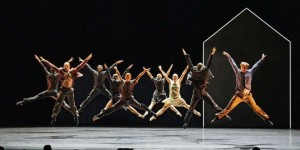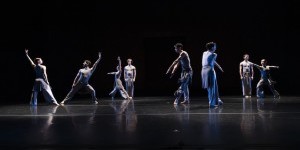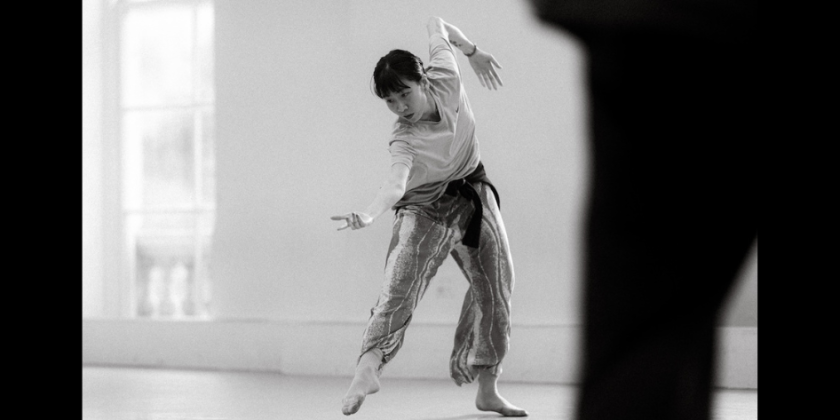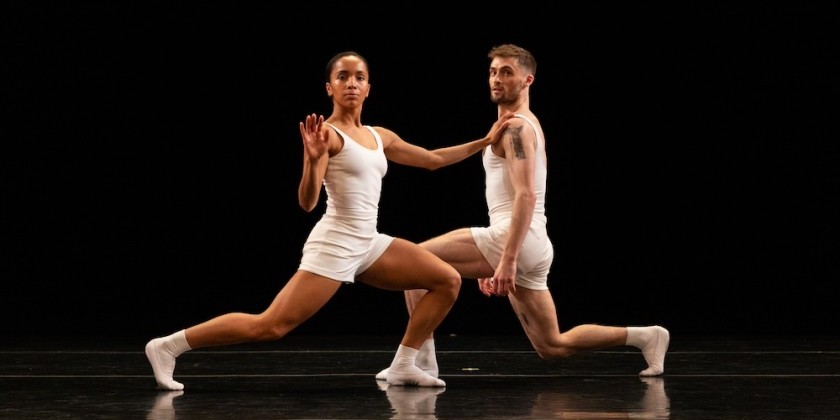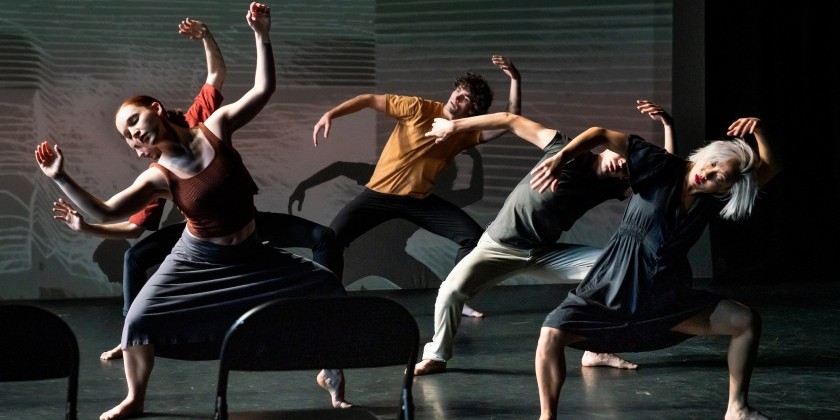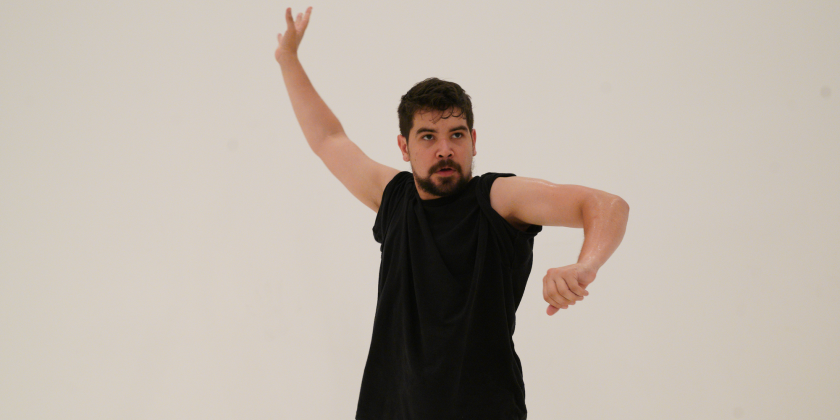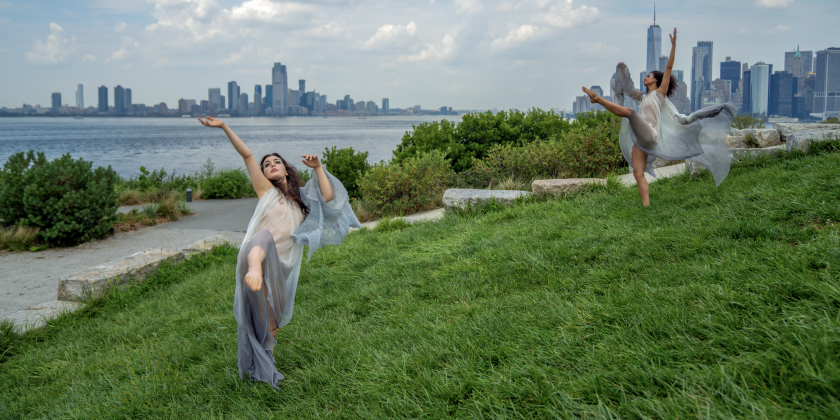IMPRESSIONS: Hilary Easton + Co’s “Nothing is perfect, nothing is finished.” at Gibney
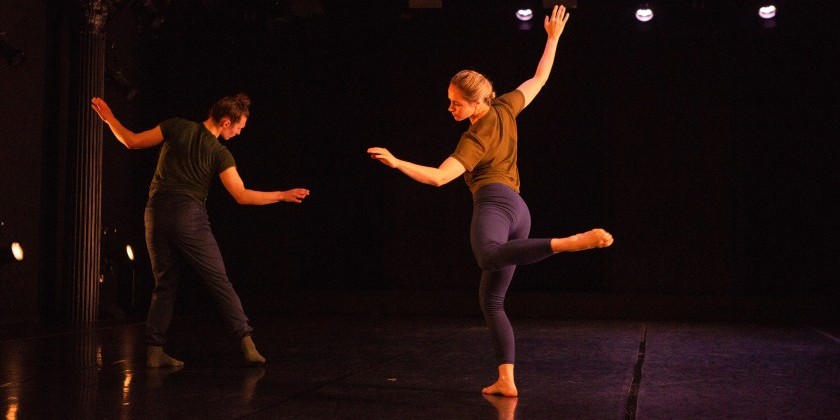
May 16, 2019
Choreography: Hilary Easton with Alexandra Albrecht and Michael Ingle
Lighting Design: Asami Morita
Music/Sound: “Birds of America in Song: Familiar Birds of the Roadside,” Debussy: “Nocturnes,” Meredith Monk: “Impermanence,” Iannis Xenakis: “Concert Ph”
A long time ago, in a world that seems far, far away, Hilary Easton formed her company. It was 1992 in New York to be exact, and she’s still making dances, surviving the ups and downs of working in a city known for its difficulty in sustaining an artistic career.
Rather than folding in on herself, becoming protective of her work until unveiled, she has thrown her arms wide open. During a two-and-a-half-week residency at Gibney, she invited audience-collaborators into the process. Easton calls the experience “invigorating, very useful, and comforting” in the program notes.
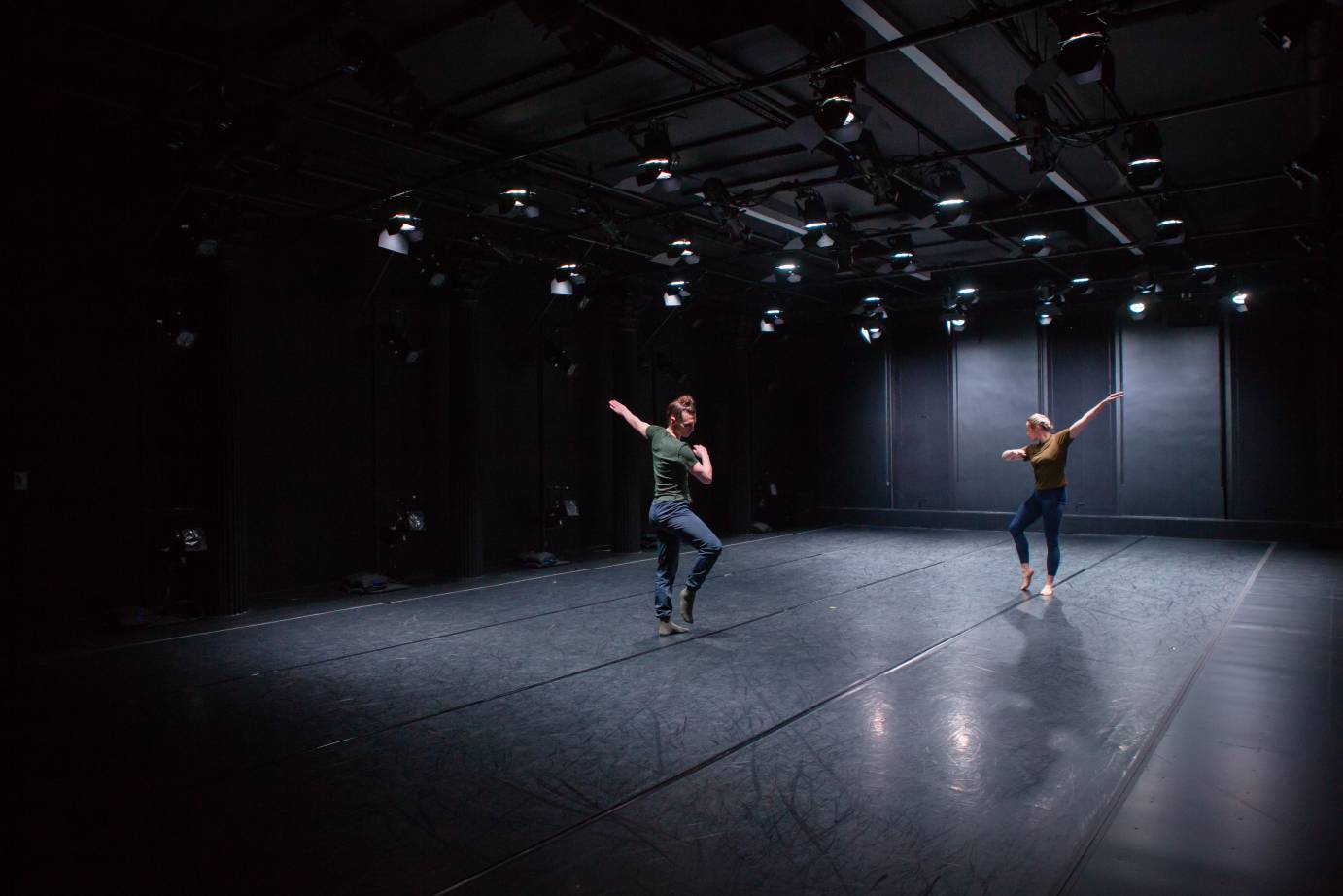
Alexandra Albrecht and Michael Ingle, who’ve worked with Easton since 2007, manifest the results of this multi-person collaboration. The 32-minute Nothing is finished, nothing is perfect. takes place in Gibney’s black box theater, the space dark and bare save a grid of lights that brighten and dim sparingly.
The piece opens with the duo traveling in a circle. Facing each other, 180 degrees apart, they skim through cross-legged ball changes, rock steps, and passés. Their arms glide in lines or angles as their feet maintain a regular cadence to the trills and chirps of “Birds of America in Song: Familiar Birds of the Roadside.” Occasionally, one dancer mouths something unidentifiable at the other.
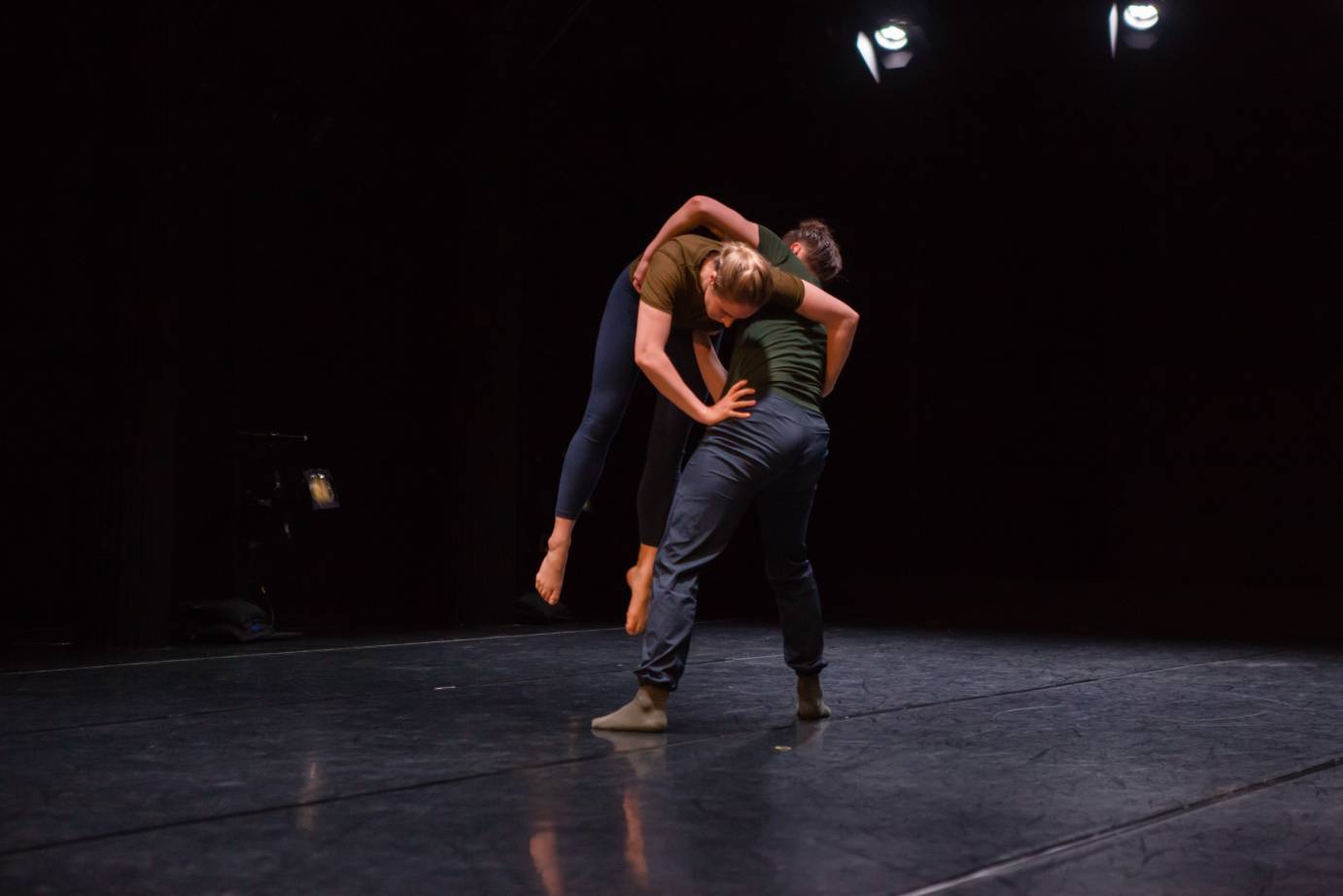
Gradually, the circle tightens, Albrecht and Ingle finding themselves inches apart. They reach out and touch one another to build into a post-modern pas de deux. Ankles brush against each other, and one hand pats, taps, and presses the other’s body. These connections precipitate swings, paces, and a jump or two that thrusts into the air even as the torso flops forward, the head grazing the shins. As the score shifts to more emotive music, they drift in and out of unison. The former appears as a diagonal line with hieroglyphic shapes; the latter are solos where the non-dancing individual perches on the sidelines.
Whatever is happening, wherever it is happening, Albrecht and Ingle watch each other — if not with their eyes, then with their skin. But not in a creepy way or a controlling one. Instead, with curiosity, they observe, offering an engaged witness to the experience of moving one’s body through time and space.
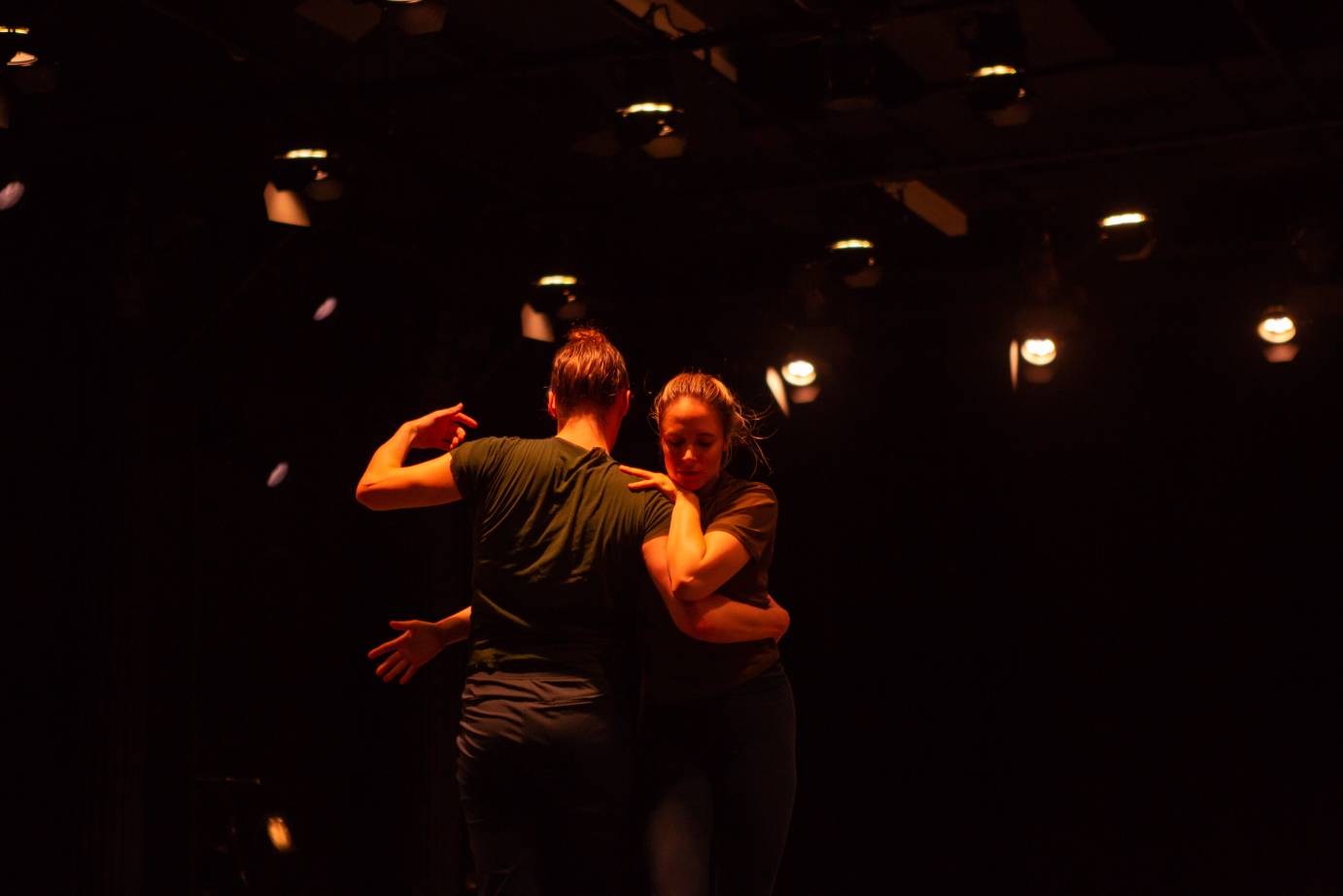
Nothing is finished, nothing is perfect. unspools with little fanfare: no drama, no virtuosity, no spectacle. All the ego and emotion have been scrubbed away in favor of actions that stay cool and contained in their kinisphere. This lack of affectation allows you to see the movement (weighted yet loose) and the person (alert yet unhurried) doing that movement.
At the end, Albrecht and Ingle stride upstage, still gazing at each other. They sink to the floor and sit, bent knees tucked to one side, their communion continuing as the lights dwindle to darkness.





